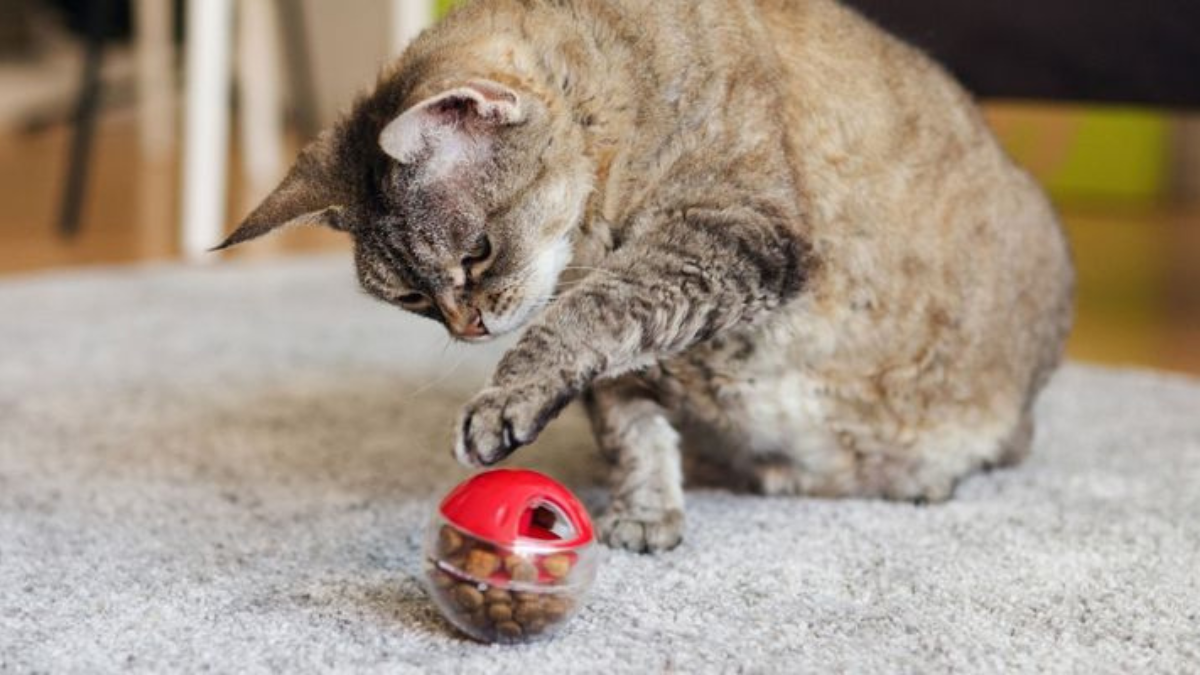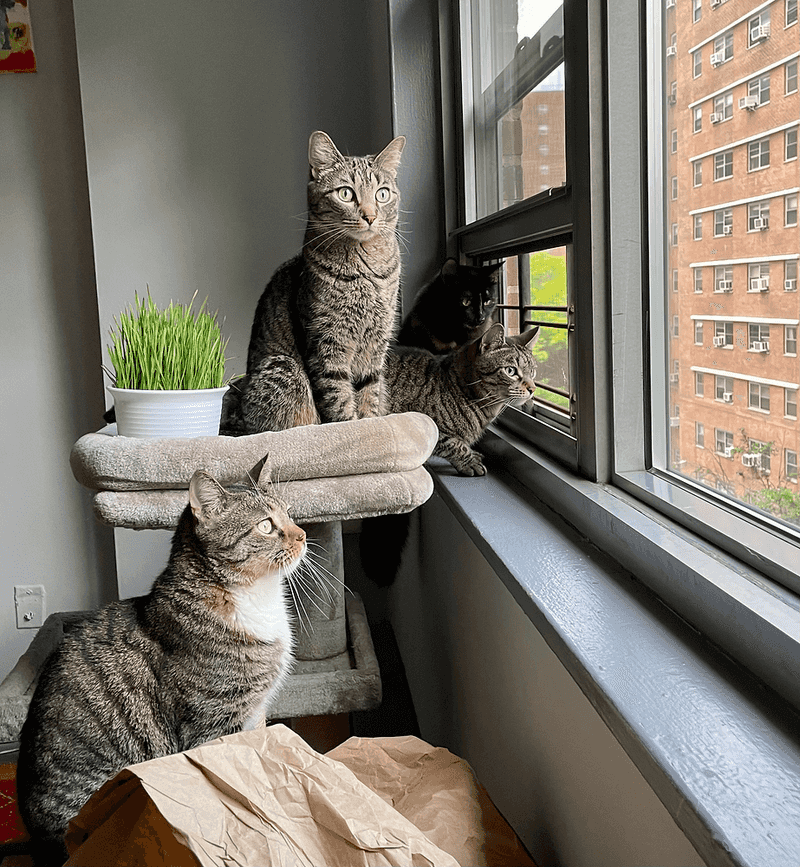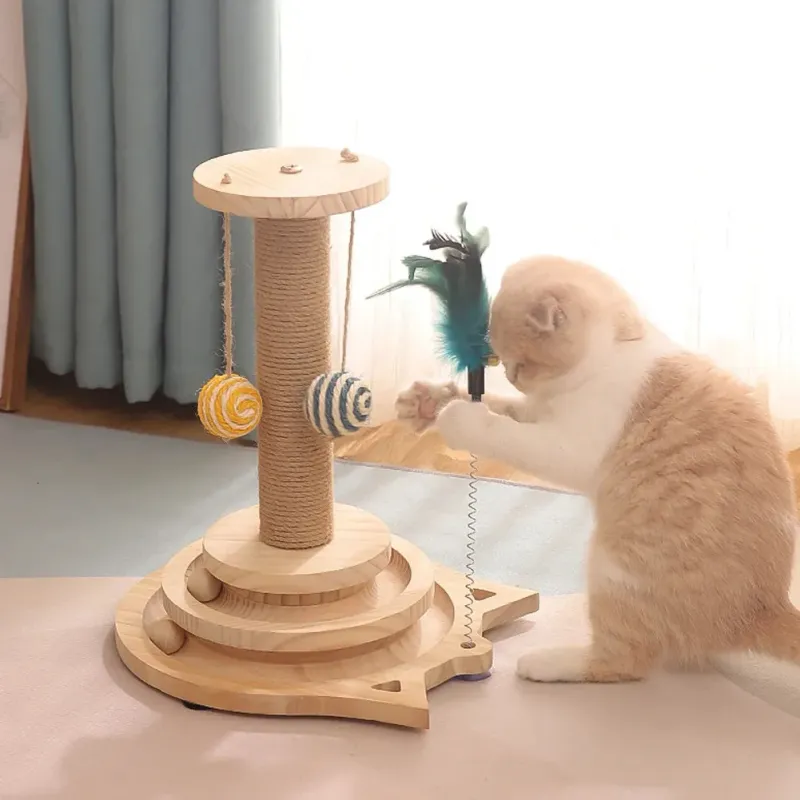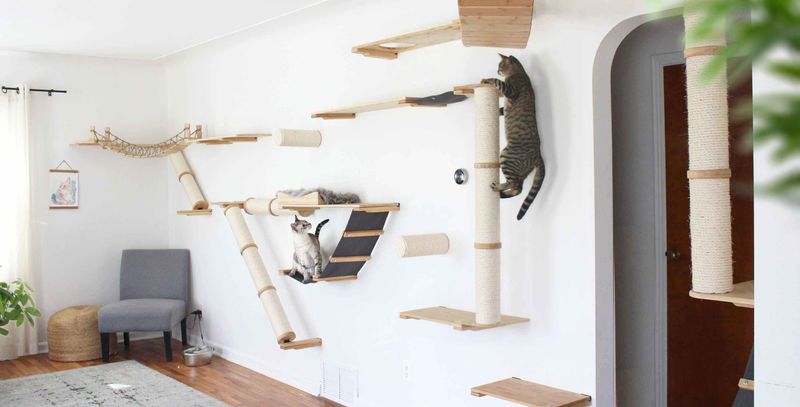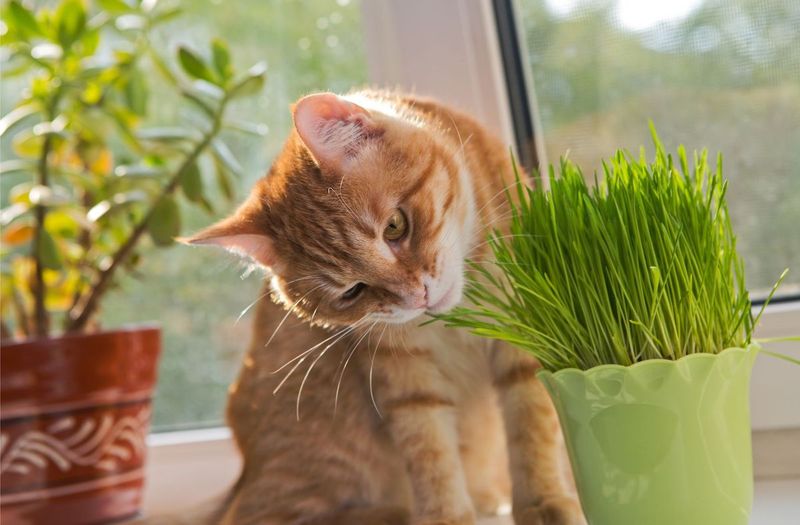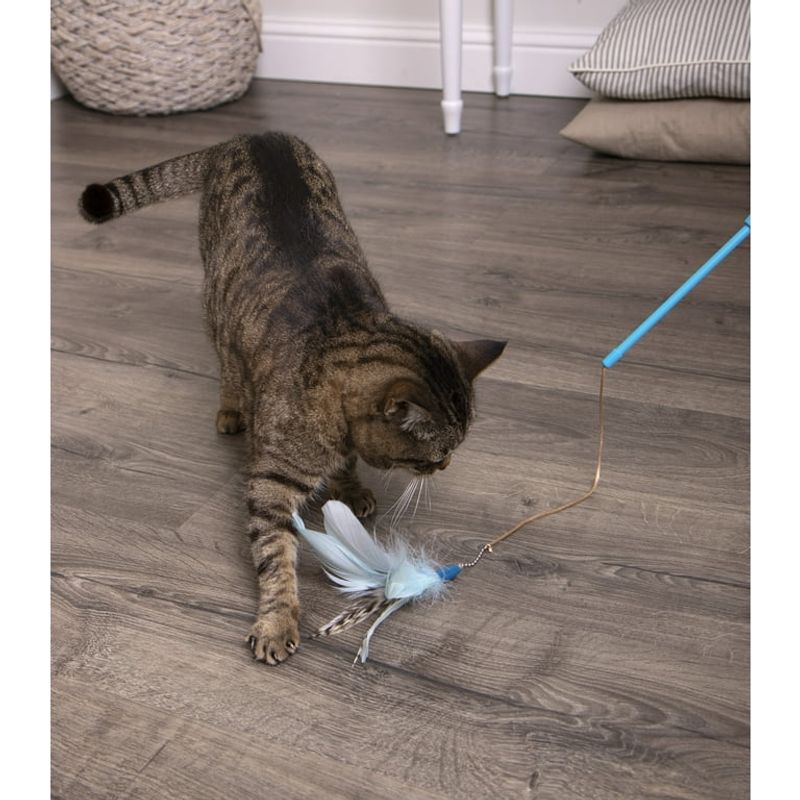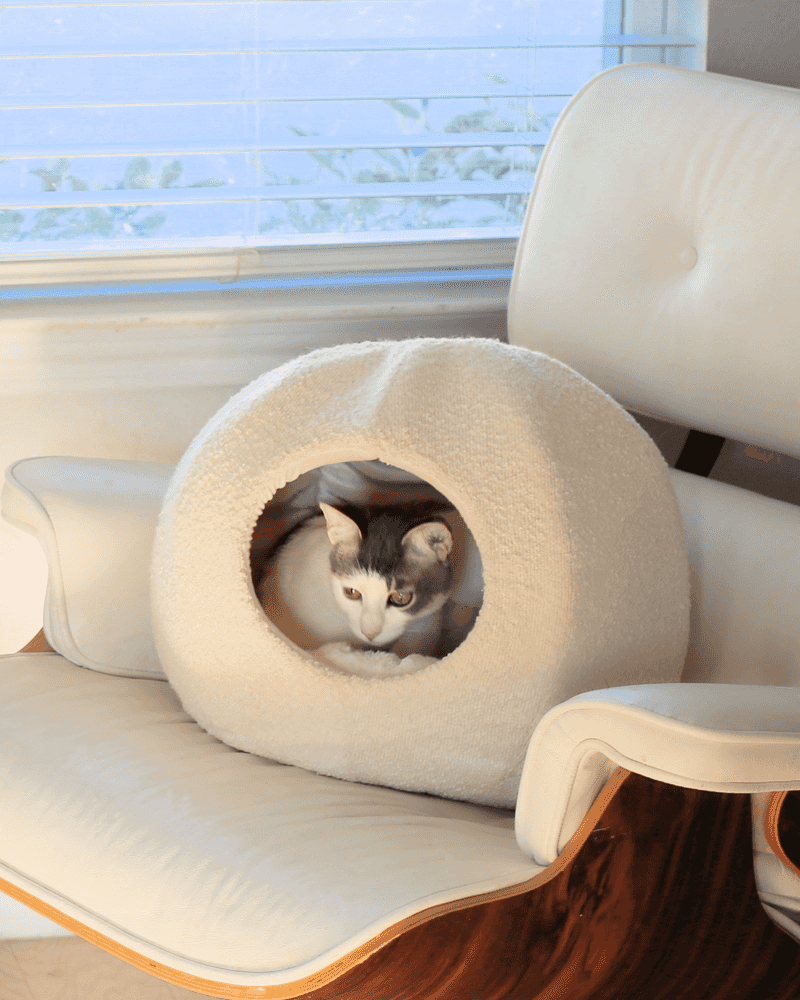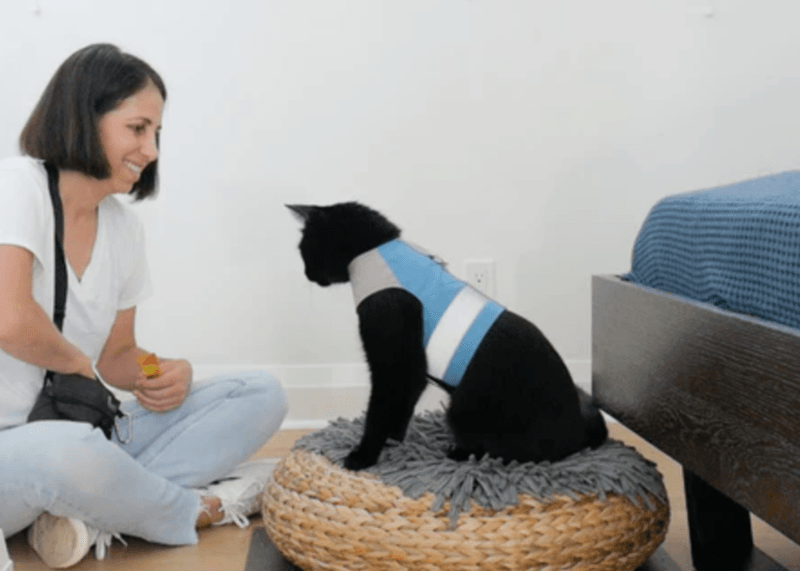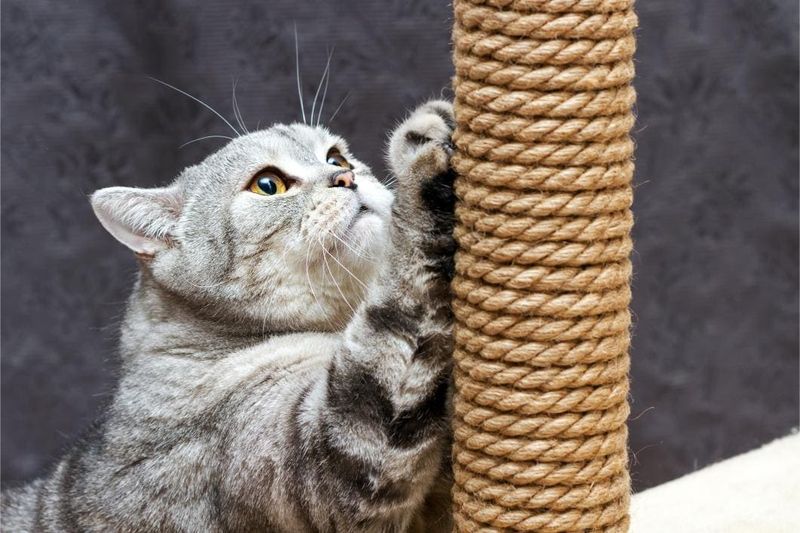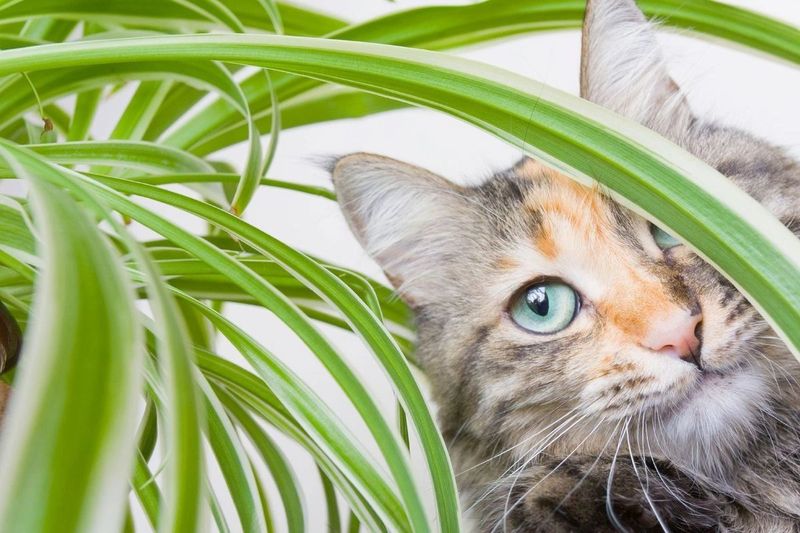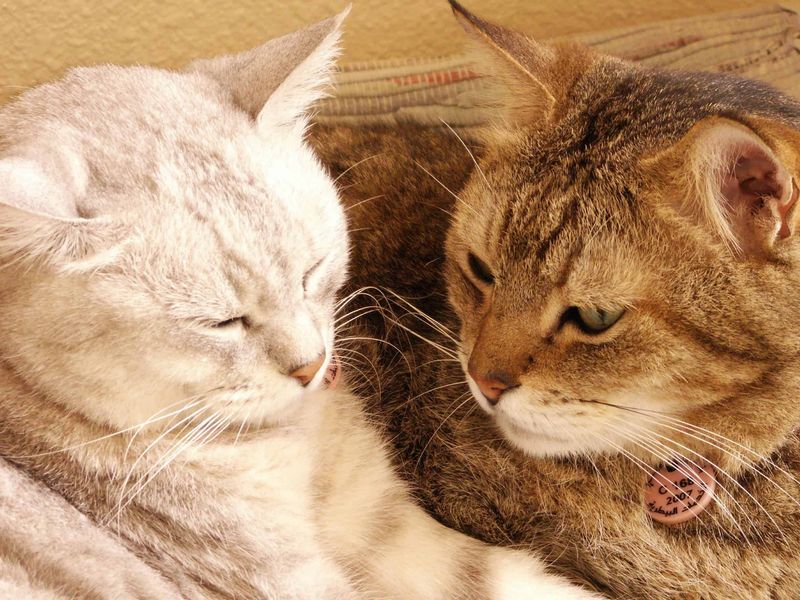📖 Table of Content:
- 1. Window Perches Create Kitty TV
- 2. Rotate Toys Regularly
- 3. Puzzle Feeders Challenge Their Minds
- 4. Vertical Space Expands Their Territory
- 5. Grow Indoor Cat Grass
- 6. Schedule Interactive Play Sessions
- 7. Create Cozy Hiding Spots
- 8. Set Up Bird-Watching Stations
- 9. Teach Tricks With Clicker Training
- 10. Provide Scratching Variety
- 11. Introduce Catnip and Silver Vine
- 12. Create Sensory Gardens
- 13. Provide Feline Companionship
Indoor cats often enjoy longer, safer lives away from outdoor dangers. However, a protected environment can also limit the stimulation they naturally crave. Boredom and under-stimulation may lead to stress or behavioral issues over time.
Cats are instinctive hunters, climbers, and explorers by nature. Without outlets for these behaviors, they may become restless or develop destructive habits. Enrichment is essential to support both their physical health and emotional well-being.
Engaging an indoor cat doesn’t require elaborate setups or constant attention. With the right activities and tools, daily life can become exciting and fulfilling. A well-stimulated cat is more content, better behaved, and more deeply connected to its environment.
1. Window Perches Create Kitty TV
Cats love watching the world go by! A comfortable window perch gives your feline friend a front-row seat to birds, squirrels, and neighborhood activity. This simple addition to your home provides hours of entertainment without any effort from you. Look for perches that attach securely to window sills or use suction cups. Many come with soft, washable covers for maximum comfort. For added excitement, hang a bird feeder outside the window where your cat can see it. Your cat will enjoy the mental stimulation while soaking up warm sunshine—an instant mood booster for indoor kitties who miss outdoor adventures.
2. Rotate Toys Regularly
Novelty keeps your cat interested! Rather than leaving all toys out at once, store most of them away and rotate different ones into play every few days. Your cat will think they’re getting brand new toys each time, preventing the boredom that comes when familiar toys lose their appeal. Create a simple storage system with three containers labeled Week 1, Week 2, and Week 3. Fill each with different toys and swap them according to the schedule. Include a variety of textures and types—crinkly toys, feathers, balls, and catnip-filled plushies. This system costs nothing extra but maximizes your existing toy investment.
3. Puzzle Feeders Challenge Their Minds
Turn mealtime into brain time! Puzzle feeders make your cat work for their food, tapping into their natural hunting instincts while slowing down fast eaters. These clever devices come in many forms—from simple balls that dispense kibble as they roll to complex multi-level puzzles. Start with easier puzzles and gradually increase difficulty as your cat masters each level. Even homemade versions work well—try hiding kibble in an egg carton or muffin tin covered with lightweight balls. The mental stimulation from puzzle feeders helps prevent cognitive decline in older cats and keeps younger ones sharp and engaged throughout the day.
4. Vertical Space Expands Their Territory
Cats naturally love heights! Providing vertical space through cat trees, shelves, or wall-mounted steps dramatically increases your cat’s living area without taking up floor space. From elevated perches, cats feel secure as they survey their domain. Strategic placement matters—position climbing structures near windows or in rooms where your family spends time. This allows your cat to be part of the action while maintaining their own space. Secure shelving with carpet remnants creates budget-friendly climbing paths. Many behavior problems disappear when cats have proper vertical territory, as it reduces competition for space in multi-cat households and provides exercise opportunities throughout the day.
5. Grow Indoor Cat Grass
Many cats crave greens! Growing cat grass indoors provides a safe alternative to houseplants your kitty might otherwise munch on. Unlike toxic plants, cat grass (typically wheat, oat, or barley grass) is perfectly safe and offers digestive benefits. Easy-to-use kits are available at pet stores, or you can DIY with organic seeds and potting soil. Keep several small pots growing in rotation so there’s always fresh grass available when one batch gets chewed down. Beyond the nutritional benefits, many cats simply enjoy the sensory experience of nibbling fresh greens—it’s a small taste of the outdoors for your indoor friend.
6. Schedule Interactive Play Sessions
Daily play sessions are non-negotiable for a happy indoor cat! Set aside 10-15 minutes at least twice daily for active play with wand toys, lasers, or other interactive options. Morning and evening sessions work best, mimicking cats’ natural hunting times. Vary your play style to simulate different prey behaviors—make toys dart quickly like mice, flutter like birds, or slither like snakes. End each session with a “successful hunt” by letting your cat catch the toy, followed by a small treat. Consistent play reduces behavior problems, maintains a healthy weight, and strengthens your bond. Even busy pet parents can find time for these short but crucial play breaks.
7. Create Cozy Hiding Spots
Secret retreats make cats feel secure! Even the most social felines need private spaces to decompress. Cardboard boxes, cat caves, or covered beds placed in quiet corners provide essential sanctuary when your cat needs alone time. Distribute multiple hiding spots throughout your home, especially in areas with less foot traffic. Line these spaces with soft blankets that carry your scent for added comfort. Some cats prefer elevated hiding places while others seek ground-level dens. These retreats are particularly important during stressful times like holidays, home renovations, or when visitors arrive. Respect your cat’s need for solitude—never force them out of their chosen hiding spot.
8. Set Up Bird-Watching Stations
Bird-watching provides endless entertainment for indoor cats! Place bird feeders and bird baths within view of your cat’s favorite windows to create a natural entertainment center. Different seed types attract various bird species, creating a diverse show. Consider installing a window suction-cup perch if you don’t have convenient sills. Some cats enjoy specialized DVD programs featuring birds and small animals, which can be played on a television when live birds aren’t active. The mental stimulation from watching natural prey movements satisfies hunting instincts without endangering wildlife. Many cats will spend hours chattering at and tracking birds, positively burning mental energy.
9. Teach Tricks With Clicker Training
Contrary to popular belief, cats are highly trainable! Clicker training provides mental stimulation while strengthening your bond. Start with simple behaviors like touching a target stick, sitting, or coming when called, then progress to more complex tricks. Keep training sessions short—just 3-5 minutes—and always end on a positive note. Use tiny, high-value treats like freeze-dried chicken or commercial training treats. The clicker marks the exact moment your cat performs correctly, making learning more efficient. Beyond entertainment value, training creates confident cats who handle stress better. It’s especially valuable for shy cats who gain confidence through mastering new skills and earning rewards.
10. Provide Scratching Variety
Scratching is non-negotiable cat behavior! Offer multiple scratching surfaces throughout your home to protect furniture while satisfying this natural need. Different cats prefer different scratching styles—some like vertical posts, others prefer horizontal pads, and some enjoy inclined surfaces. Materials matter too. Sisal rope, cardboard, carpet, and wood each create different textures that appeal to different cats. Place scratchers near sleeping areas, by windows, and in social spaces where your cat spends time. Regular nail trims complement scratching options. Combined with appropriate scratching surfaces, trimming helps minimize damage to furniture while allowing your cat to express natural behaviors.
11. Introduce Catnip and Silver Vine
Herbal enrichment brings joy to many cats! While catnip gets all the fame, only about 70% of cats respond to it. Silver vine, a Japanese plant, affects about 80% of cats and often works for those immune to catnip’s charms. Offer these herbs in toys, loose in small containers, or grow them in pots. Fresh herbs typically create stronger reactions than dried versions. The effects usually last 10-15 minutes, followed by a refractory period of about an hour. Both plants are completely safe and non-addictive. They can stimulate playful behavior in sedentary cats and provide stress relief for anxious ones—a natural mood enhancer for your indoor friend.
12. Create Sensory Gardens
Indoor sensory gardens engage all your cat’s senses! Beyond cat grass, consider growing cat-safe herbs like valerian, lemon balm, and chamomile in sunny windowsills. These plants provide interesting scents, textures, and occasional nibbling opportunities. Add visual interest with cat-safe flowering plants such as African violets or roses. Avoid toxic varieties like lilies, which are extremely dangerous to cats. Some cats enjoy the sound of a small desktop fountain, adding auditory enrichment to their environment. Rotate plants seasonally to maintain your cat’s interest. This mini-ecosystem brings nature indoors while keeping your cat safely contained, satisfying their curiosity about the natural world.
13. Provide Feline Companionship
Some cats thrive with friends! If your lifestyle keeps you away from home regularly, consider adopting a second cat for companionship. Proper introductions are crucial—a gradual process over several weeks helps ensure a harmonious relationship. Match energy levels and personalities when possible. A playful kitten might overwhelm a senior cat, while two young cats often become best friends and playmates. Provide multiple resources—separate feeding stations, litter boxes, and resting areas—to prevent competition. Not every cat wants feline company, so assess your current cat’s personality carefully. Some prefer being solo, while others blossom with a buddy who provides social interaction when humans are busy.
